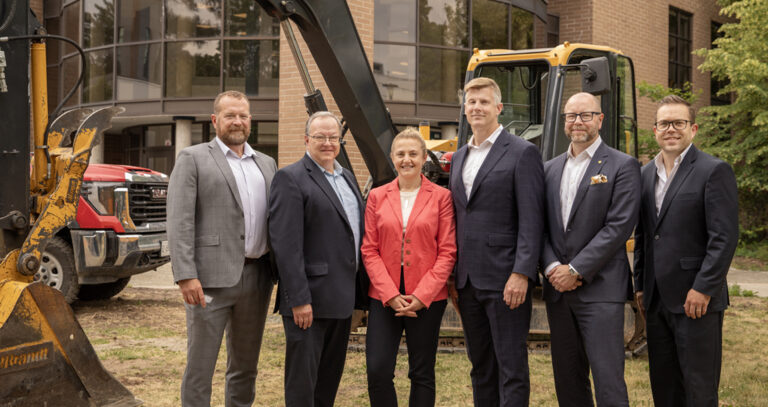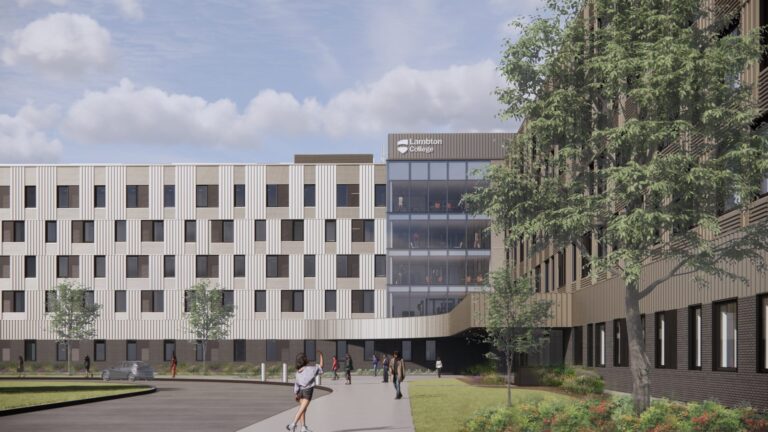Smart cities. It has been the industry buzz term of the past five years. Rarely can you carry on a conversation about developing infrastructure without stumbling on the subject.
But what does ‘smart’ really mean? What does it entail? What time of infrastructure has to be built to be smart? Ask 10 different people in the industry, and you are almost guaranteed to receive 10 different answers to those questions.
Understanding smart city development is vital to understanding how best to target infrastructure investments, especially in our urban areas. One false move could cost millions decades from now, and it is unacceptable to just see that as someone else’s problem. It is imperative to make informed decisions, understanding the evolving landscape and how out cities will be impact by what’s ahead.
In October, ReNew Canada, with the support of WSP, convened a roundtable discussion in order to discuss the aforementioned questions, and to build real understanding about how to develop smart (if that is the word we really want to use) cities for the decades to follow.
What makes a city smart?
Defining the goal of what the ‘smart’ city is meant to accomplish provided the starting point for the conversation. Oftentimes terminology is thrown around without any real appreciation for whether or not everyone is working off of the same definition, and smart cities is no exception.
There was a general consensus around the room was that smart was about providing overall benefit to the people who work, live, and play in that community. Using technology, innovation, and best practices to improve the quality of life of the citizens is (or perhaps, should be) at the heart of the drive to create a smart city.
And creating ‘smart’ doesn’t have to be game-changing investments in billion-dollar infrastructure projects. It can be simple efficiencies that make people’s lives better. Antoine Belaieff, Fare Integration Program Sponsor at Metrolinx, provided an excellent example of providing data on how full trains are at certain times of the day. By allowing people to make an informed choice, squeezing onto a packed train or adjusting a schedule to jump on one with more capacity. Perhaps it’s the option of jumping onto a toll highway in order to get home to your family faster. It’s about choice, and having the information available to make an informed one.
Providing that information to the general public involves the need for connectivity, also referred to as the fourth utility. And like the other utilities, one of the issues surrounding connectivity is the issue of ownership. If municipalities are going to reap the rewards of connectivity, in a municipal context, do they need to own the connectivity assets, or can they be owned by a third-party?
This was the point that struck the first chord in the smart cities discussion. Connectivity providers such as Bell and Rogers are ahead of the game in terms of providing the needed community infrastructure. If the telecommunications companies are able to build, and reap the benefits of, the connectivity infrastructure, it becomes another profit centre for corporate interests. But if municipalities are able to install the infrastructure, or work out a public-private partnership agreement that leads to 100 per cent ownership as part of the financing model, it is the cities that can benefit from the long-term value of connectivity infrastructure.
It seems pretty simple which should be the priority: municipal ownership. But it isn’t that simple. Municipal infrastructure budgets are already stretched incredibly thin, and having to add a massive asset like connectivity infrastructure could be too much to finance in the short term, and pay for operations and maintenance long-term. Even with advancements in asset management, municipalities can only handle so much.
The question was then raised whether or not public ownership was the issue that needed to be considered, or whether public control was the more important issue to be discussed? An effective governance model could eliminate the need for ownership by the public sector, so long as the governance model included provisions around the sharing and analysis of any data collected using the connectivity infrastructure.
Exchanging data
Before getting to the question of data governance, there were significant issues expressed around the current ability to share data, both within organizations and with other companies and organizations, even when it has the potential to provide a positive impact for the public good.
It was speculated that one of the issues surrounds insecurity around data, which has led some companies and governments to over-protect their information. This can come in the form of lengthy, and sometimes ultimately unnecessary, legal documentation. These legal documents can be dictated by fear of the unknown, how data might be exposed for private exploitation, and in the process, create an inability to share resources when collaboration is possible. This includes things like maps and transportation/transit ridership information, where collaborations among multiple jurisdictions can help to address areas of concern.
When collaboration is able to happen, the obstacle can then be related to formatting. As an example, municipalities don’t always use software that is compatible with what’s used in another jurisdiction, making it extremely difficult to read, or potentially merge with another like data set.
Then there is the challenge within individual organizations in breaking down silos. Again, the trust factor can come into play. The lack of understanding surrounding the end goal of using data creates a lack of trust.
This is why education is such a vital aspect of the conversation surrounding data. Data has been most emphatically portrayed as something that is stolen, leading to important individual information falling into the hands of someone who can exploit that information for financial gain. There is also a blind spot around the sharing of data, understanding how and when data can be shared, under what forum can it be legitimately collected, and under what format can it be distributed.
Solving this issue would take the creation of a simplified framework for data sharing, one that is easily understood by the legal teams who furiously to protect, the organizations that want to looking at sharing it in the spirit of collaboration, and the public that want to ensure that their personal data is being protected from those who seek to profit from it.
A framework would be a starting point for education all stakeholders about data, making it easier to then focus on how its collection and analysis can benefit the general public. And it doesn’t have to be with massive projects; simple, small, effective uses of data collection can provide the ‘quick wins’ that lead to better services, more effective uses of public funds, and more effective community programming.
A starting point
One example of a quick and easy use of data collection that was cited during the discussion, one that is non-invasive but serves an important purpose, was a project done by the City of Kingston. In an effort to grow tourism within the city, the municipality wanted to find out how many drivers from Quebec were driving along Highway 401 through the north end of Kingston, but not getting off the highway to stop for anything in the city. Targeting that stakeholder could provide an economic opportunity for the community, but they needed evidence that a high enough percentage of drivers with Quebec license plates were passing through without stopping. This is a simple form of data collection, one where license plate numbers were tracked based on the duration of time it took them to travel from one end of the city to the other.
If we go back to the earlier statement about what the word ‘smart’ should entail in the context of smart cities, providing overall benefit to the people who work, live, and play in that community, then the Kingston project certainly qualifies. It is the collection of data in order to understand the habits of a stakeholder group in order to generate greater economic benefit for the community.
But, taking into account the earlier discussion in the piece, flaws in the initiative, from the standpoint of data collection, could be conceived. Without a governance framework in place, how does a driver trust that this is the only use of the data being collected? Also, if the municipality has not properly communicated the initiative with the public, then questions can be raised about the overall economic benefit of the ‘smart’ initiative, as well as raising questions about whether data is being collected regarding citizens within its own community (how frequently are people leaving town and why could be the real reason for the data collection).
This is why the education component is so important. With so much negative press surrounding data collection, municipalities need to be proactive in communicating with the public about any data collection, how it is being used, and most importantly, how it helps to better their life in the community.
This is already happening. Data collected from sensors and cameras at traffic stops are helping to better program the transportation grid, with tweaks being made based on the number of users travelling in each direction through an intersection. Sensors within fire hydrants and water pipe networks are helping to analyze changes to water pressure, which usually indicate a leak somewhere in the system. More frequent sensors within the system make it easier to geographically pinpoint where the issue is occurring.
Involving the private sector
The private sector, for its part, has shown a clear interest in getting further involved with data collection and analysis in Canadian cities, something that could have significant positive or negative ramifications depending on how it is handled.
From the positive perspective, the private sector has the resources to build the infrastructure needed, at their own expense. Cities would be able to implement the technology portion of the smart city movement, and use procurement models that could lead to the eventual municipal ownership of the network (perhaps using he public-private partnership).
The negatives surround the ownership of the data that comes from the connectivity infrastructure that is installed. As mentioned earlier, companies with the capabilities to install large amounts of infrastructure could potentially analyze and monetize data that is collected. And as the infrastructure falls within or attached to public sector infrastructure, the backlash from collecting personal data for profit could be extensive from the general public.
This is likely to become a bigger issue with the emergence of 5G infrastructure. The advantage of 5G is that it can provide internet speeds up to 100 times faster than 4G. However, the technology does not penetrate buildings very well, and there is a need for an extensive expansion of the number of sensors needed, which may not be easy to hide when mounted on current public infrastructure like lampposts, stoplights, and public/private buildings.
Then there is the question about sharing the infrastructure. The expanded number of sensors is one thing, but what happens if the players in the space want to install their own technology. Now you are multiplying the amount of new sensors in urban centres by two, three, or perhaps more as more companies enter the space.
If the private sector is going to control data collected on public infrastructure, then considerations must be given to the original discussion of the benefits of creating a smart city: improving the quality of life for the people who work, live, and play in the community. The question is: how does private ownership of data, collected and analyzed from public sector infrastructure, ultimately benefit the public? And if it doesn’t, does it make sense to install the modern technology just for technology’s stake?
It’s an important conundrum as municipalities struggle with the cost of smart cities infrastructure in a time of fiscally-restrained infrastructure asset budgets. Actual Media CEO Todd Latham suggested that cities need time to catch up with data collection, allowing communities to identify issues that data has the potential to solve, rather than have the private sector pressure communities to install technology before they know best how to utilize it.
Solving problems is where the real opportunity may lie when it comes to municipal use of data, and it also could provide the best opportunity for the private sector to work with the public sector. This is already being seen with the use of data in water infrastructure. Real-time data analysis of water is helping to identify elevated levels of contaminants quicker where they appear in drinking water or in lakes/rivers. The result? Less people get sick, shutdown of drinking water resources take less time, and recreation areas can be reopened sooner.
Several members of the discussion suggested that transportation is the next area where big data analysis will have the most impact in urban centres. Real-time traffic control, more efficient transit, and the creation of safer streets for pedestrians. With the emergence of automated vehicles, real-time data will be even more vital to smart mobility within the city core.
Next steps
If creating safe, smart communities is the ultimate goal, and the collection and analysis of large amounts of data is what helps to reach that goal? The roundtable attendees had several suggestions:
- Use data at a smaller scale to build change;
- Create a repository of positive and negative stories for governments to learn from;
- Convince the internal hierarchy of the benefits of data;
- Make evidence-based decisions and communicate them with the public;
- Educate municipalities on the why, then the how;
- Look for common ground for the public and private sectors to work together for the common good;
- Lay out the legal obligations of data;
- Find a relationship between data and climate change strategy;
- Give municipalities the tools to succeed; and
- Overcome the leadership issues to create a vision.
The development of smart cities means building better communities for those who live and work there. Doing so takes a much better understanding of data than what both our municipalities and our citizens have now, and it is up to those same municipalities to fill the education void. Public ownership of connectivity infrastructure may not be necessary, but public control certainly is. And that control needs to occur thanks to a governance framework that is easy for all stakeholders to understand.
The future of cities depends on the adoption of technology, but ensuring that we know how to use it to benefit everyone.
We would like to thank WSP for their generous support in helping us to bring industry experts together for this important discussion.
Roundtable Contributors
We would like to thank the following organizations for their participation in our expert roundtable:
- Actual Media
- Alectra Utilities
- Bell Mobility
- Bosch
- Canada Infrastructure Bank
- Commscope
- Enwave
- Lane Consulting
- Metrolinx
- Oracle
- OSPE
- RCCAO
- Region of York
- Watefront Toronto
- WSP











